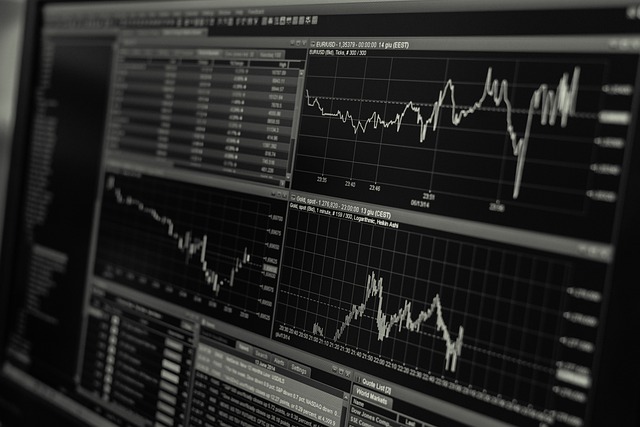The Intricacies of Trading Robots: Automation in the Financial Markets
In the rapidly evolving world of finance, trading robots, also known as algorithmic trading software, have come to the forefront as indispensable tools for traders and investors alike. These automated systems utilize complex algorithms to execute trades at speeds and frequencies that no human trader can match. In this article, we will explore the various aspects of trading robots, their advantages and disadvantages, and their impact on modern trading practices.

Understanding Trading Robots
To encapsulate the essence of trading robots, it’s critical to define what they are and how they operate. Trading robots are essentially pieces of software that can analyze market data, make decisions, and execute orders on behalf of traders. They can range from simple algorithms that execute predefined trading strategies to highly sophisticated AI-driven platforms capable of machine learning and market sentiment analysis.
How Do Trading Robots Work?
The functionality of a trading robot can be broken down into several key components:
- Market Analysis: Trading robots constantly analyze vast amounts of market data, including price trends, volume, volatility, and other indicators.
- Strategy Implementation: Based on the analysis, they implement predefined trading strategies to buy or sell assets.
- Execution: Once a trading signal is generated, these robots can execute trades within milliseconds, capitalizing on even the smallest price movements.
- Risk Management: Many trading robots come equipped with tools to manage risk, such as stop-loss orders and position sizing algorithms.
Benefits of Trading Robots
The growing popularity of trading robots can be attributed to several significant advantages they offer:
1. Speed and Efficiency
In today's fast-paced trading environment, speed is crucial. Trading robots can analyze and execute trades at lightning speed, making them invaluable instruments for capitalizing on fleeting market opportunities. From my perspective, this aspect massively diminishes the chances of human error, especially during volatile market conditions.
2. Emotionless Trading
Another appealing feature of trading robots is their ability to trade without emotional biases. Human traders often face challenges from fear, greed, and other psychological pressures that can compromise decision-making. A robot, devoid of emotions, sticks strictly to its programmed strategy.
3. Backtesting Capabilities
Trading robots can be backtested using historical data to evaluate their performance across various market conditions. This capability enables traders to fine-tune their strategies before deploying them in real-time, which I find particularly beneficial for risk-averse investors who wish to minimize losses.
Challenges and Limitations of Trading Robots
Despite their advantages, trading robots are not without their shortcomings. Here are some challenges and limitations to consider:
1. Dependence on Technology
While technology has vastly improved trading efficiencies, a heavy reliance on automated systems comes with risks. Software glitches, connectivity issues, or even power outages can lead to significant financial ramifications. I believe a balanced approach is essential—traders should remain informed and ready to intervene when necessary.
2. Lack of Human Judgment
Trading robots cannot incorporate qualitative analyses, such as geopolitical events or market sentiment. These factors can dramatically impact market movements. In my view, while trading robots are powerful tools, they should complement human expertise rather than replace it entirely.
3. Over-Optimization
One of the pitfalls that traders often fall into is over-optimizing their strategies during the backtesting phase. This phenomenon, known as "curve fitting," can generate misleading results that don’t hold up in real-world trading conditions. Striking the right balance between optimization and adaptability is something every trader must navigate.

The Future of Trading Robots
As technology continues to advance, it is evident that trading robots will evolve alongside the market. With the integration of machine learning and AI, we can expect trading algorithms to become more sophisticated, enabling them to adapt to changing market conditions and execute even more nuanced strategies.
1. Increased Accessibility
The democratization of trading technologies means that sophisticated trading robots will likely become more accessible to the average investor. I see this as an exciting development, as it opens the door for more individuals to participate in the financial markets and potentially lead to a more diverse trading community.
2. Ethical Considerations
With the increased use of trading robots comes a need for ethical guidelines. Issues surrounding market manipulation, data privacy, and the implications of high-frequency trading are areas that warrant discussion. As trading becomes more automated, regulators will need to step in to ensure fair play and protect investors. Personally, I think this is crucial for the sustainability of the trading landscape.
Conclusion
In summation, trading robots represent an exciting frontier in the world of finance. Their ability to analyze vast datasets and execute trades at lightning speed offers several advantages, yet they also come with their own set of challenges. From my perspective, the ideal path forward is a symbiotic one where the best features of trading robots are utilized while ensuring that human traders remain active participants in the decision-making process. As we look towards the future, it’s essential to embrace these innovations while remaining grounded in ethical considerations and risk management practices. Only then can the true potential of trading robots be realized.